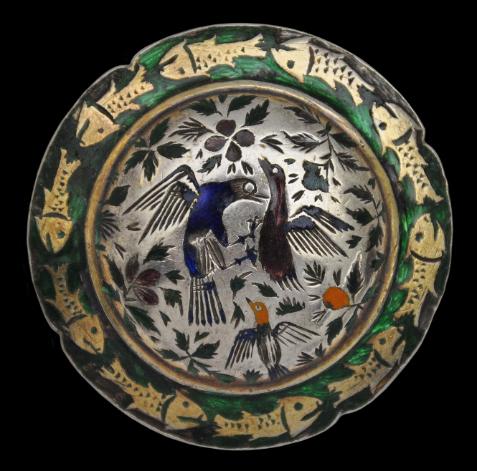
Lucknow Enamel Silver Shield Boss
Enamelled Silver Shield Boss taken from the Kaiserbagh Palace, during the 1857 Siege of Lucknow
Lucknow, India
18th-19th century
diameter: 4.7cm, weight: 33g
The enamelled silver ornamental shield boss (four were usually attached to the centre of a shield for decoration) is of a quality and styling that suggests royal origins, and indeed, the reverse is gilded and finely engraved with the words:
‘Taken out of the KAISER BAGH PALACE at LUCKNOW during the Siege by JOHN CHADWICK. HM 9th Lancers, March 15, 1857.’
The actual siege of Lucknow occurred between 30 May and 27 November 1857. But the British finally retook Lucknow, starting from 6 March 1858 with all fighting over by 21 March 1858. So it seems that the dating on the back is imprecise. Most probably, it should have been engraved with 1858 rather than 1857. The confusion is understandable – it was probably presented some years after the event, after Chadwick had returned to England.
The boss is of silver that has been engraved and champleve enamelled and includes colours seldom seen in Lucknow enamel work. The colours of the central raised part are blue, green pink, and orange. The scalloped rim is decorated in green and gold. Three birds are shown in flight amidst leaves, and berries.
The rim is decorated with ten fish in gold.
There can be some ambiguity as to where in India enamel work comes from, but not in this case. The Lucknow provenance of this piece is clear, quite apart from the engraved inscription on the back: the ten fish executed in gold against a green enamel ground around the rim clearly shows the Lucknow origins. The fish motif was part of the royal emblem of the Oudh (Awadh) royal family that ruled over Lucknow. The motif in gold is highly suggestive of palace origins.
The fish motif was used on royal standards and on the walls, in stucco, of royal compounds. The Nawab even had a floating boat-like vessel shaped as a fish (see Markel, 2010, p. 85 for an illustration).
The enamel work relates to that on a scabbard on a sabre in the Metropolitan Museum of Art (see Alexander, 2015, p. 190).
The reverse also has three posts which most likely were to be used to attach the boss to the shield. As if to emphasise the boss’ status as war booty, it has been converted to a brooch with the (non-invasive) addition of a silver brooch mechanism to the reverse, atop the posts. Presumably, it was given as a gift from John Chadwick to a member of his family.
John de Healey Chadwick served in the 9th Lancers and inherited Healey Hall, near Manchester in northern England.
The 9th Queen’s Royal Lancers was a cavalry regiment of the British Army. The Lancers were first posted to India at the time of the Gwalior Campaign of 1843. They took part in the First Anglo-Sikh War of 1845-46 and the Second Anglo-Sikh War of 1848-49. During the Indian mutiny of 1857, the 9th Lancers earned the name the ‘Delhi Spearmen’, a name which is believed to have been given to them by the mutineers themselves. 9th Lancers took part in all three of the most notable events associated with the Indian mutiny, namely, the siege and capture of Delhi, the relief of Lucknow and the capture of Lucknow, from when the boss here was looted.
The ruling family of Oudh established themselves as independent hereditary rulers during the collapse of Mughal power in the early eighteenth century.
The strategic position of their capital and that of Oudh province prompted the British to use them as a buffer state between their own territories in the east, and the west. However the British used the inevitable intrigue and jockeying in the Oudh court to exert greater and greater influence. By the turn of the nineteenth century they managed to virtually exercise a veto right on the succession. The Nawabs devoted much of their time trying to project the outward signs of their sovereignty and regality, rather than exerting real power. Accordingly, Lucknow became an important centre for court arts.
Wajid ‘Ali Shah was the last Nawab of Oudh. By the mid-nineteenth century, the Nawabs had lost their political and military usefulness to the British, and so the British under Dalhousie, Governor General of the East India Company, annexed the kingdom outright in 1856 on the grounds of internal misrule. It was in Oudh where the first great revolt of Indian Independence started in 1857. Meanwhile Wajid ‘Ali Shah was exiled to Calcutta with most of his family. The Siege of Lucknow had its origins in the annexation and the Nawab’s exile. The high-handed action by the East India Company was resented within the state and elsewhere in India.
With regards the condition of the boss, there are the usual minor losses to the enamel but otherwise, it is in excellent condition. It remains wearable as a brooch, although the brooch mechanism could be safely removed.
References
Alexander, D., Islamic Arms and Armor: in the Metropolitan Museum of Art, The Metropolitan Museum of Art, New York, 2015.
Llewellyn-Jones, R. (ed.), Lucknow: City of Illusion (The Alkazi Collection of Photography), Prestel, 2006.
Markel, S. et al, India’s Fabled City: The Art of Courtly Lucknow, LACMA/DelMonico Books, 2010.
Provenance
UK art market
Inventory no.: 3571
SOLD

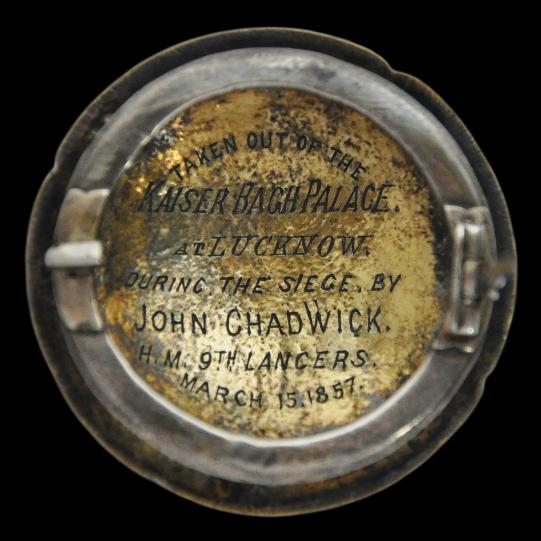
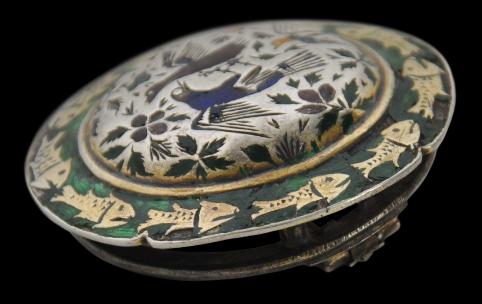
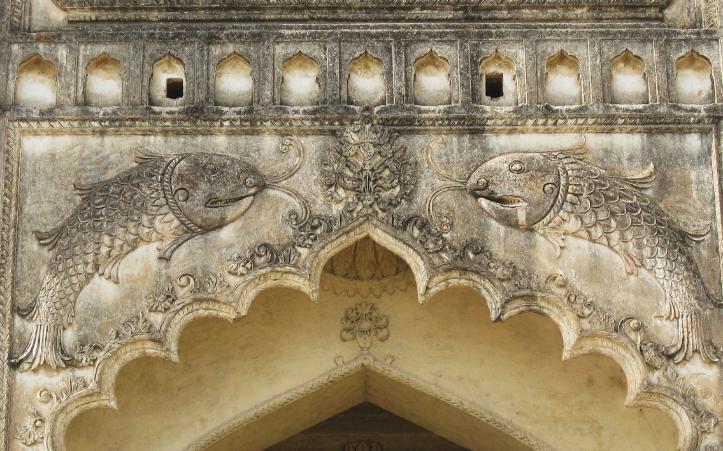
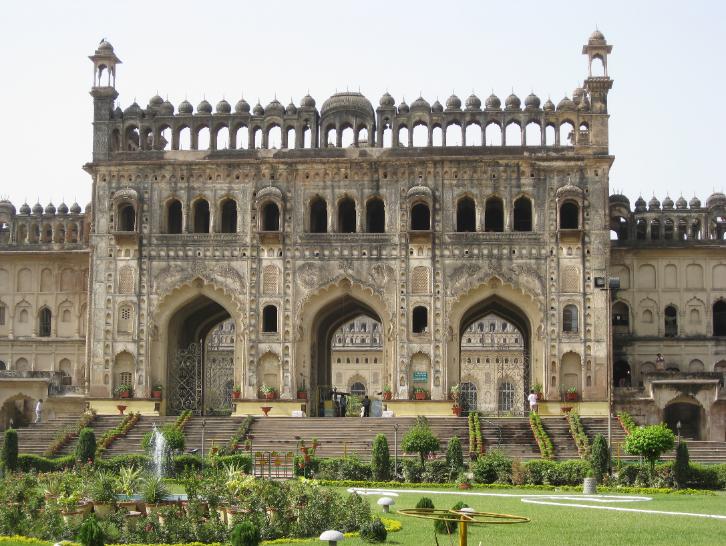
Part of the Kaiserbargh Palace complex in Lucknow, photographed in August 2007.
Detail from the Palace walls showing royal fish motifs.

